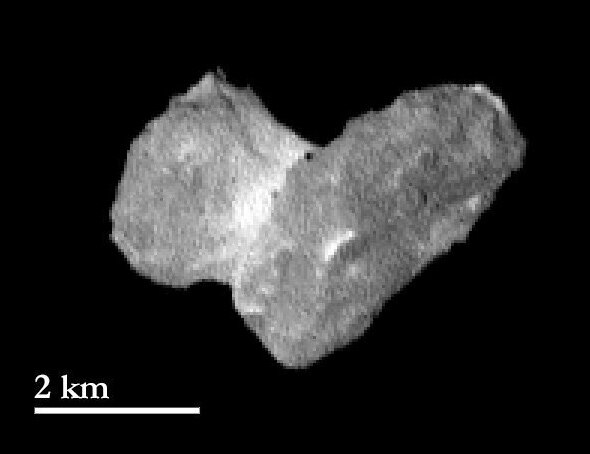Create a free profile to get unlimited access to exclusive videos, sweepstakes, and more!
2,000 Kilometers to Go

The Rosetta spacecraft is now less than 2,000 kilometers from the comet 67P/Churyumov-Gerasimenko (which I’ll just call ChuGer, for obvious reasons). In less than a week the European probe will enter orbit around the 4-kilometer-wide chunk of ice and rock, but even from this distance it’s starting to return pretty great images of it. On July 29, 2014, it took this shot with its main OSIRIS camera:
The comet’s solid nucleus is definitely a freaky place. Not only does it have those two big chunks, there appears to be a brighter collar or ring of material in the neck region. It’s too early to know what’s going on there, though it may provide a clue as to why the comet has that overall shape. It may have resulted from two different-sized comets sticking together after a low speed impact, or it could be it was a single comet and has eroded away to leave that shape (a lot of the solid material in a comet is what we would think of as frozen gases—carbon dioxide, carbon monoxide, ammonia, and so on—and as it approaches the Sun they sublimate away).
My own best guess is that it was a single comet that got hit by a smaller rock and shattered from the impact. The pieces spread out, but not very far, and their combined gravity, feeble as it was, pulled it all back together in a jumble with those two big pieces dominating.
The bright collar is puzzling. It’s not like a snowball a few kilometers across has a lot of gravity—a good, solid jump would launch you into space if you were standing on it—but there’s some. The neck region would have the weakest gravity, so pebbles, rocks, dust, and so on would tend to flow downhill, to the two lobes. That might leave the brighter ice behind to create that ring. I’m completely speculating here, but hopefully we’ll know more soon.
At around the same time that higher-resolution photo was taken, Rosetta also took one with its lower resolution NavCam, and got this:
Interesting! While fuzzier, you can see a handful of craters, including the two big ones, one on each lobe. This is definitely a promise of things to come.
Rosetta will enter orbit around ChuGer in early August, and the imagine quality will continue to improve. Exciting times are ahead! My friend Emily Lakdawalla at The Planetary Society has lots of details on what’s going on and what will happen then, too.


























